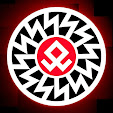
No matter the culture he belongs to, the shaman knows that he can draw his powers from the natural world around him. The vigor of Mother Earth is what helps him effectively channel his functions. That is why all shamanic cultures nurture a deep respect for the plants that allow a better understanding of both the physical and spiritual world.
The Bedouins are a nomadic tribe whose history stretches back thousands of years. The term Bedouintranslates to “desert dweller”, signifying the fact that these ancient peoples have developed a special relationship with their arid habitat. In the desert, plants are rare, and their scarcity makes them even more precious.

Shamanic figures in Bedouin culture are called Fugara, meaning “weak.” But this is just a reference to the fact that Bedouin shamans refrain from consuming substantial meals. Their skinny bodies might suggest physical weakness but these anatomical particularities are no indication of their spiritual strength. In the tribal structure, the Fugara is a pivotal character.
They are members of the tribe that provide healing of the body and soul, offer advice and spiritual insight, act as meditation mentors and guide those who undergo interdimensional journeys through altered states. As you can see, the Fugara choose to be weaker in this world only for their powers to grow stronger in other planes of existence. But in order to do that, they need keys to unlock the mental portals leading to the spiritual world. Sacred keys with leaves and roots.
Like every other religious ecstasy practitioner, the venerable Fugara view trees as possessing a soul or vital principle that animates every living being. As such, they have always associated trees with a variety of deities. The tribes often worshipped these sacred trees and considered them places where spirits resided. Thus, the act of planting a holy tree was viewed as an action of great spiritual importance, for the mere presence of the tree was enough to invite benevolent spirits and ward against malignant ones.
The nature of an individual’s interaction with one of these divine plants would often have consequences, so respect was owed and offered.

One of these plants is the ‘Ausaj bush or desert thorn, a rigid shrub with spiny branches. All of its parts are used in traditional Bedouin medicine, from roots to berries. This makes it highly appreciated and honored.
In The Arab of the Desert, H.R.P. Dickson wrote:
“[…] the ‘Ausaj bush is considered to be under the special protection of the Jinns (spirits). It is never cut nor are branches ever broken from it. It is believed that anyone injuring it will be followed and tormented, especially at night, by hostile Jinns. The Bedouin, upon approaching an ‘Ausaj bush, will always invoke God’s protection […]”
Another tree considered holy by multiple cultures, including the Bedouin, is the Dom Acacia or Sidr tree (Ziziphus spina-christi). Also known as Christ’s Thorn Jujube, this evergreen tree is said to have provided the branches for Jesus’ crown of thorns. The Bedouin value its fruit and the precious shade it offers often has tribe members congregate at its base.
“Abraham planted a tamarisk tree in Beersheba, and there he called on the name of the LORD, the Eternal God.” – Genesis 21:33
Osiris, the Egyptian god of the afterlife had his fair share of contact with this holy tree. Vying for Osiris’ position of power, Set tricked him into getting into a coffin which he then shut, sealed with lead and threw into the Nile river. The coffin came to a rest at the base of a tamarisk tree and became embedded into its trunk.

Like the coffin itself, this myth became enclosed in the Bedouins’ collective memory, and the Fugara say that when passing a Tourfa tree at night, they can hear the branches whispering.
Modern psychonauts will recognize the Syrian rue (Peganum harmala) as a powerful tool for exploring the invisible world. But the Bedouin shamans have known about it for thousands of years and it plays a vital role in some of their ceremonies. It is also used as medication and as an ingredient in love potions. One theory even proposes that the Syrian rue was the base for the Drink of the Immortals or Soma, a Vedic ritual drink of great importance.

It’s not hard to speculate what made these plants so revered in Bedouin culture. It’s a well-known fact that some of them contain active compounds that facilitate one’s entrance into altered states of consciousness. When ingested, they induce heightened levels of awareness and a sense of ultra-connectivity. Syrian rue contains harmine and other harmala alkaloids and in combination with some species of Acacia, it can produce effects similar to those of Ayahuasca. When taken in a sacred manner, this brew can act as a medium through which the Divine Being expresses itself. The user can then communicate with the subtle spheres of existence and becomes aware of what lies beyond the material world.
Plants with psychotropic qualities have always occupied a special place in human culture. They became sacred by virtue of the powers they expressed: food, shelter, cures for ailments of the body and soul. They stimulate creativity, support freedom and stand testament to the oneness that is everything and everywhere. They are symbols of life itself.
Source:
- https://books.google.ro/books/about/The_Arab_of_the_Desert.html?id=yrRLAQAAIAAJ&redir_esc=y







